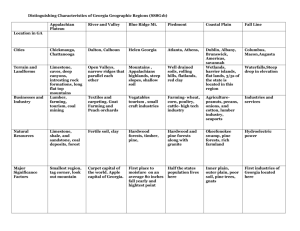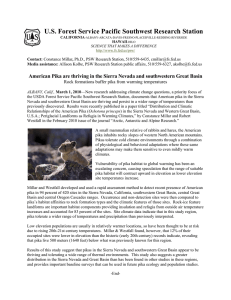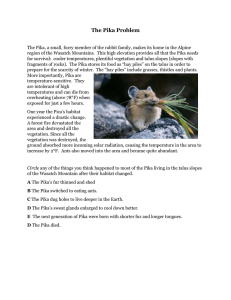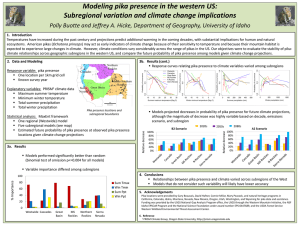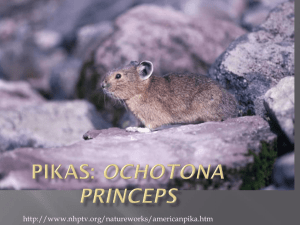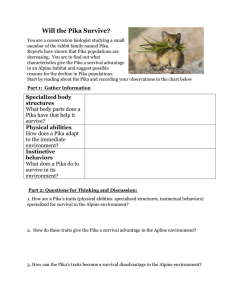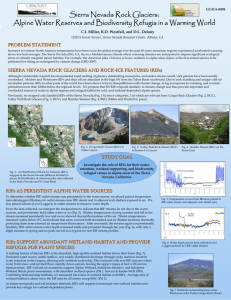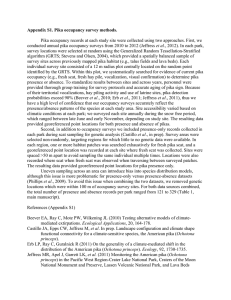Climate Studies; A Medley Pubs/pdfs are on my SNRC
advertisement
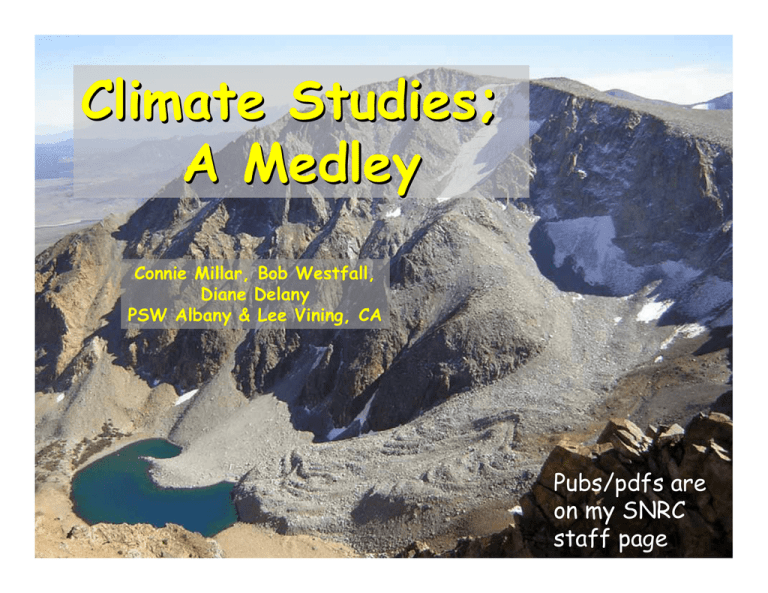
Climate Studies; A Medley Connie Millar, Bob Westfall, Diane Delany PSW Albany & Lee Vining, CA Pubs/pdfs are on my SNRC staff page Climate Change #1. Re-Framing Resource Management Strategies What can resource managers do? Climate Change Science Program; Adaptation Options for Climate-Sensitive Ecosystems SAP 4.4 Reports Online Managing In The Face of Change A Toolbox of Options - “5-R + 1” Adaptation Strategies *Create Resistance *Increase Resilience *Allow Forests to Respond *Realign Highly Altered Ecosystems Mitigation Strategies *Reduce Greenhouse Gases & Ecologic Footprint Overall *Set Priorities (Tiered,Triage,Vulnerabilities) A Toolkit for Adapting to Climate Change on Western National Forests: Incorporating Climate into Resource Management and Planning Connie Millar, Linda Joyce, Ron Neilson, Dave Peterson with Michael Furniss, Mark Nechodom, Mike Landram, Carl Skinner, Pat Manley, Sharon Yeh, Brad Burmark, and a gang from PNW, RMRS, and WWETAC Phase II, Tahoe National Forest Case Study Sharon Yeh #2. Treeline Response to Climate: Up, Down, All Around How did/do changing climates affect subalpine forests? Paleohistoric to modern During the past 3600 yrs, forests died out, shifted aspects, and recolonized watersheds - multi-century droughts had most influence Limber pine, Sierra Nevada and Great Basin A Mixed Conifer Forest Grew on Whitewing Mtn (now above treeline) during the Medieval Centuries (900-1350 CE) Comprising: Deadwood spp Now growing at… Whitebark Pine ↓ krumm W White Pine ↓250 m Lodgepole Pine ↓250 m Jeffrey Pine ↓500 m Mountain Hemlock ↓250 m Sugar Pine ↓600 m & W SN Effect of Warming on Current Forests Treeline elevation incorporated into regional warming models Projected Loss of Alpine & Subalpine Forests: ≤95% Hayhoe et al. 2004 PNAS Subalpine Forests Respond Complexly to Climate * Increase in Forest Density * Change in Secies Compositions; Growth & Form; Mortality & Insect Relations, Genetic Diversities * Shift Aspects * Move Down & Up in Elevation #3. Sierra Nevada Rock Glaciers Little Known High-Elevation Water Storage & Biodiversity Refugia in a Warming World Rock Glaciers and related RIFs abound in Sierran canyons and cirques, but remain widely overlooked… RIFs hoard ice and seep water persistently to wetlands below Rock mantle insulates the ice from warming and melting, and disguises the feature as an ordinary scree slope RIF outlet streams don’t dry up Temp dataloggers placed in water & air: Outlet streams freeze °C Snow covers Snow melts RIF Wetland Plant Communities High Species Diversity Rock glacier wetlands harbor rare species in otherwise xeric alpine locations; these wetlands will persist under warming climates and serve as important biodiversity refugia #4 American Pika; A ClimateEndangered Alpine Species? cute o s I ’m Laws 2007 For Immediate Release, August and Sept, 2007 Endangered Species Act Protection Sought for American Pika: High-Elevation Rabbit Relative Could Become California’s First Animal Driven Extinct by Global Warming We find that pika is abundant in Sierra Nevada & SW Great Basin Ranges Pika are most abundant on RIFs We located 173 pika sites in summer 2007; 82% are RIF habitats We extended the lower elev range in SN and GB: 5593’ – 12,661’ MinTemperature for 173 Pika Locations; PRISM Annual January July Tmin Tmin Tmax Pika pellet archives have taken over my bedroom DON’T MISS THE “SIERRA PIKATEERS” TONIGHT AFTER DINNER DON’T MISS THE “SIERRA PIKATEERS” TONIGHT AFTER DINNER or: “Effects on Human Behavior of Over-Exposure to High Elevations”…

